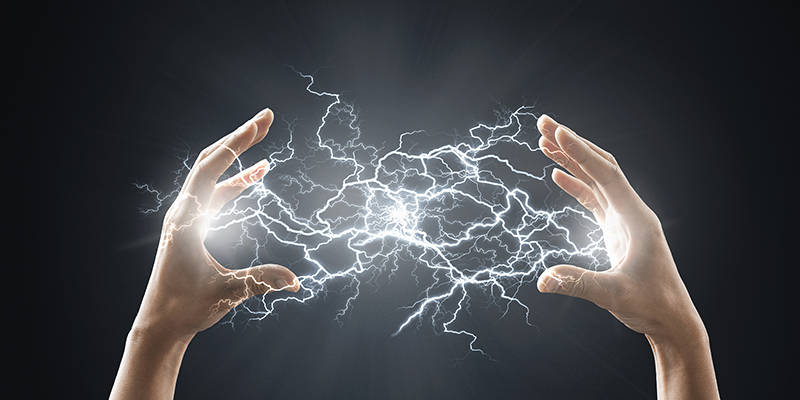[fusion_builder_container hundred_percent=”no” equal_height_columns=”no” menu_anchor=”” hide_on_mobile=”small-visibility,medium-visibility,large-visibility” class=”” id=”” background_color=”” background_image=”” background_position=”center center” background_repeat=”no-repeat” fade=”no” background_parallax=”none” parallax_speed=”0.3″ video_mp4=”” video_webm=”” video_ogv=”” video_url=”” video_aspect_ratio=”16:9″ video_loop=”yes” video_mute=”yes” overlay_color=”” video_preview_image=”” border_size=”” border_color=”” border_style=”solid” padding_top=”” padding_bottom=”” padding_left=”” padding_right=””][fusion_builder_row][fusion_builder_column type=”1_1″ layout=”1_1″ background_position=”left top” background_color=”” border_size=”” border_color=”” border_style=”solid” border_position=”all” spacing=”yes” background_image=”” background_repeat=”no-repeat” padding_top=”” padding_right=”” padding_bottom=”” padding_left=”” margin_top=”0px” margin_bottom=”0px” class=”” id=”” animation_type=”” animation_speed=”0.3″ animation_direction=”left” hide_on_mobile=”small-visibility,medium-visibility,large-visibility” center_content=”no” last=”no” min_height=”” hover_type=”none” link=””][fusion_separator style_type=”none” hide_on_mobile=”small-visibility,medium-visibility,large-visibility” class=”” id=”” sep_color=”” top_margin=”” bottom_margin=”-100px” border_size=”” icon=”” icon_size=”” icon_circle=”” icon_circle_color=”” width=”” alignment=”center” /][fusion_imageframe image_id=”2215|full” max_width=”” style_type=”bottomshadow” blur=”” stylecolor=”” hover_type=”none” bordersize=”” bordercolor=”” borderradius=”” align=”center” lightbox=”no” gallery_id=”” lightbox_image=”” lightbox_image_id=”” alt=”” link=”” linktarget=”_self” hide_on_mobile=”small-visibility,medium-visibility,large-visibility” class=”” id=”” animation_type=”” animation_direction=”left” animation_speed=”0.3″ animation_offset=”” filter_hue=”0″ filter_saturation=”100″ filter_brightness=”100″ filter_contrast=”100″ filter_invert=”0″ filter_sepia=”0″ filter_opacity=”100″ filter_blur=”0″ filter_hue_hover=”0″ filter_saturation_hover=”100″ filter_brightness_hover=”100″ filter_contrast_hover=”100″ filter_invert_hover=”0″ filter_sepia_hover=”0″ filter_opacity_hover=”100″ filter_blur_hover=”0″]https://ndi.ltd/wp-content/uploads/staticelectricity.jpg[/fusion_imageframe][fusion_separator style_type=”none” hide_on_mobile=”small-visibility,medium-visibility,large-visibility” class=”” id=”” sep_color=”” top_margin=”” bottom_margin=”60px” border_size=”” icon=”” icon_size=”” icon_circle=”” icon_circle_color=”” width=”” alignment=”center” /][fusion_text columns=”” column_min_width=”” column_spacing=”” rule_style=”default” rule_size=”” rule_color=”” hide_on_mobile=”small-visibility,medium-visibility,large-visibility” class=”” id=”” animation_type=”” animation_direction=”left” animation_speed=”0.3″ animation_offset=””]
Static electricity is a common issue with large-format inkjet printing. It’s often identified as the cause of print quality problems. In this article we talk about what it is, what causes it and how to eliminate it.
[/fusion_text][fusion_separator style_type=”shadow” hide_on_mobile=”small-visibility,medium-visibility,large-visibility” class=”” id=”” sep_color=”” top_margin=”” bottom_margin=”” border_size=”” icon=”” icon_size=”” icon_circle=”” icon_circle_color=”” width=”” alignment=”center” /][fusion_text columns=”” column_min_width=”” column_spacing=”” rule_style=”default” rule_size=”” rule_color=”” hide_on_mobile=”small-visibility,medium-visibility,large-visibility” class=”” id=”” animation_type=”” animation_direction=”left” animation_speed=”0.3″ animation_offset=””]
What is it?
Static electricity refers to an imbalance of electric charges on the surface of an object. It occurs when there is a build-up or accumulation of excess electric charges, creating an electrostatic discharge when the charged object comes into contact with another object or the surrounding environment.
Electricity is made up of tiny particles called electrons, which carry a negative charge. In most objects, the positive and negative charges are balanced, resulting in a neutral state. However, certain materials, such as plastics or certain fabrics, have the ability to accumulate or “hold” electric charges.
When two objects with different levels of electric charge come into contact or are rubbed against each other, the electrons can transfer from one object to the other. This transfer of electrons causes one object to become positively charged (losing electrons) and the other to become negatively charged (gaining electrons).
The accumulation of excess electric charges creates an electrostatic field around the charged object. If there is a pathway for the charges to flow, such as through a conductor or when the charged object comes close to another object with opposite charge, an electrostatic discharge can occur. This discharge is what we commonly experience as a static shock, characterized by a sudden, small electric shock that can be felt or seen as a spark.
[/fusion_text][fusion_separator style_type=”shadow” hide_on_mobile=”small-visibility,medium-visibility,large-visibility” class=”” id=”” sep_color=”” top_margin=”” bottom_margin=”” border_size=”” icon=”” icon_size=”” icon_circle=”” icon_circle_color=”” width=”” alignment=”center” /][fusion_text columns=”” column_min_width=”” column_spacing=”” rule_style=”default” rule_size=”” rule_color=”” hide_on_mobile=”small-visibility,medium-visibility,large-visibility” class=”” id=”” animation_type=”” animation_direction=”left” animation_speed=”0.3″ animation_offset=””]
What causes it
Often with large-format inkjet printing, substrates are stacked in piles and dragged across each other as they are loaded onto the printer, exchanging electrons and creating a static charge.
Many treated substrates like plastics, including styrene, polyvinyl chloride (PVC), polycarbonate, and various types of foam boards – carry a very high level of static charge because most of these materials are treated with a high-voltage corona to improve their printability. This treatment adds a high initial charge to the substrates and increases the propensity to carry an even greater charge from lifting, sliding, rubbing, etc.
In some instances, static electricity can also be generated as the substrate passes through the printer.
[/fusion_text][fusion_separator style_type=”shadow” hide_on_mobile=”small-visibility,medium-visibility,large-visibility” class=”” id=”” sep_color=”” top_margin=”” bottom_margin=”” border_size=”” icon=”” icon_size=”” icon_circle=”” icon_circle_color=”” width=”” alignment=”center” /][fusion_text columns=”” column_min_width=”” column_spacing=”” rule_style=”default” rule_size=”” rule_color=”” hide_on_mobile=”small-visibility,medium-visibility,large-visibility” class=”” id=”” animation_type=”” animation_direction=”left” animation_speed=”0.3″ animation_offset=””]
Printing problems caused by it
Dust attraction
One of the primary concerns with static electricity is dust accumulating on the substrate and the print machine. When your substrates are electrically charged, they will attract dust and lint particles. This will be seen as small ‘holes’ in the finished print, where the ink has printed over the top of the dust and has then fallen off after the charge has dissipated.
Ink misting
Just like static attracts dust, it can attract or repel ink. If your substrate has static electricity, ink can either be drawn to the wrong spot or fail to adhere to the proper place. Static charge can scatter ink droplets, causing blurring of the image. This is often seen as a shadow effect in the direction of the carriage movement.
Electronics damage
The ink mist caused by the repulsion of the ink droplets by the static charged substrate causes ink drops to stick to the printhead and UV lamps, eventually clogging nozzles and causing damage. High static charges can also damage sensitive printer electronics, sensors, and controllers.
[/fusion_text][fusion_separator style_type=”shadow” hide_on_mobile=”small-visibility,medium-visibility,large-visibility” class=”” id=”” sep_color=”” top_margin=”” bottom_margin=”” border_size=”” icon=”” icon_size=”” icon_circle=”” icon_circle_color=”” width=”” alignment=”center” /][fusion_text columns=”” column_min_width=”” column_spacing=”” rule_style=”default” rule_size=”” rule_color=”” hide_on_mobile=”small-visibility,medium-visibility,large-visibility” class=”” id=”” animation_type=”” animation_direction=”left” animation_speed=”0.3″ animation_offset=””]
How to get rid of it
Humidity and Temperature
Controlling the environment in your print room is the primary action in reducing static electricity buildup. The recommended temperature range is typically between 68°F (20°C) and 72°F (22°C). Extremely low or high temperatures can exacerbate static electricity issues, so it’s best to avoid extreme temperature conditions.
Humidity plays a crucial role in controlling static electricity. Higher humidity levels help to dissipate static charges by increasing moisture in the air. That’s because water conducts electricity well. Potentially charged ions cling harmlessly to moisture in the air instead of your materials and equipment. The ideal humidity range to minimize static electricity-related problems is generally between 40% and 60%.
Ionisers
Static electricity ionisers, also known as static eliminators or anti-static ionisers, are devices designed to neutralise or reduce static charges on objects and surfaces. They work by emitting ions into the surrounding air, which helps to counterbalance or neutralise the buildup of static electricity.
A high voltage is applied to a series of emitter points or wires within the ioniser unit. The high voltage creates a corona discharge, releasing both positive and negative ions into the air.
They can be installed as standalone units or integrated into equipment.
Non-Conductive Mats
A common source of static is through floor carpeting. Using non-conductive flooring around the machine and work area prevents static caused by movement of people and objects on the floor. Non-conductive mats are typically made from materials that have high electrical resistance, such as rubber or vinyl. These materials do not conduct electricity and prevent the flow of electric charges.
Static Eliminators
There are a variety of static eliminator tools that are available;
Anti-static brushes can be mounted on the machine to make contact with the print substrate before printing. Wands are also available that are waved across plastic sheets and other substrates also help eliminate static electricity.
Ionising Air Guns or Nozzles: These handheld devices blow ionised air onto a surface to neutralise static charges. They often feature a built-in ionising generator and airflow control to direct the ionised air precisely where needed.
Anti-static sprays and wipes can also be used to treat print substrates.
Grounding Wires
Using conductive materials such as copper tape on the printing bed and connecting to the earth via grounding wires gives the charge an effective route out of the print substrate.
Grounding wires drain the static charges away as they are produced, removing excess charge by transferring electrons between the object and the earth.
There is no way to completely eliminate static electricity, but combining all the methods outlined above can make a huge difference.
[/fusion_text][/fusion_builder_column][/fusion_builder_row][/fusion_builder_container]

